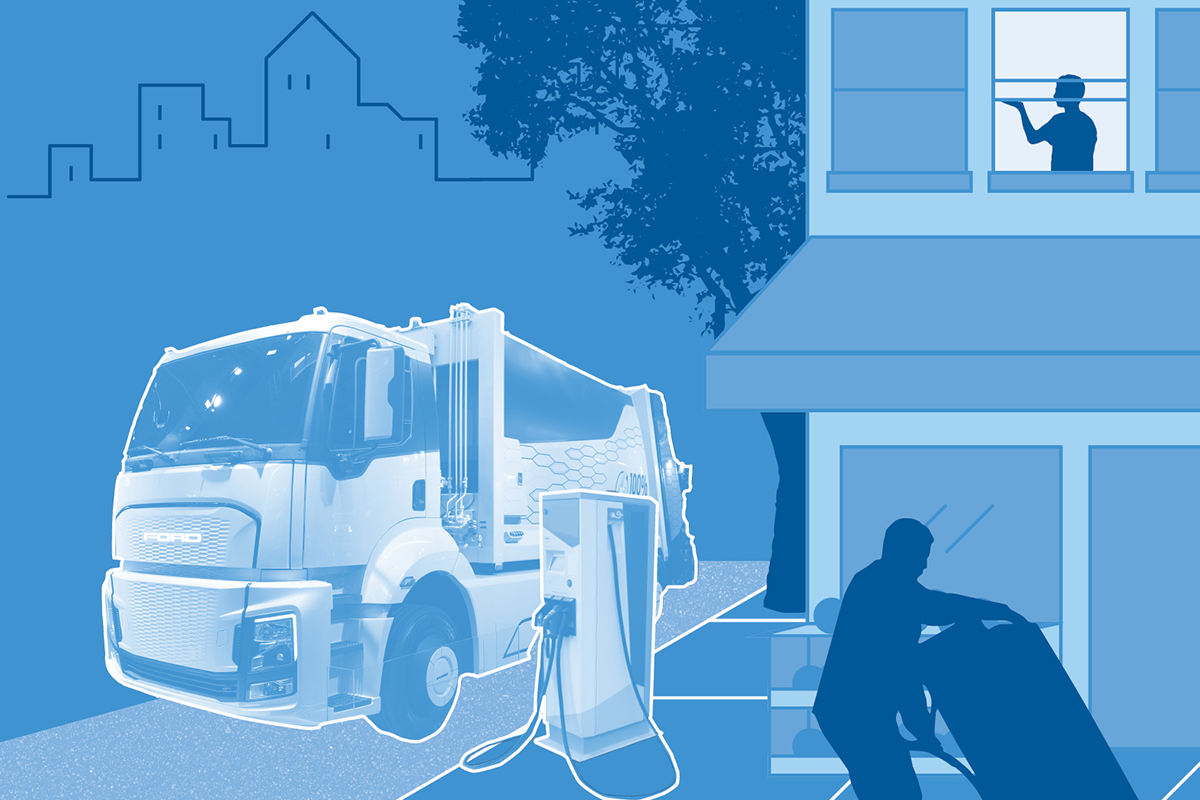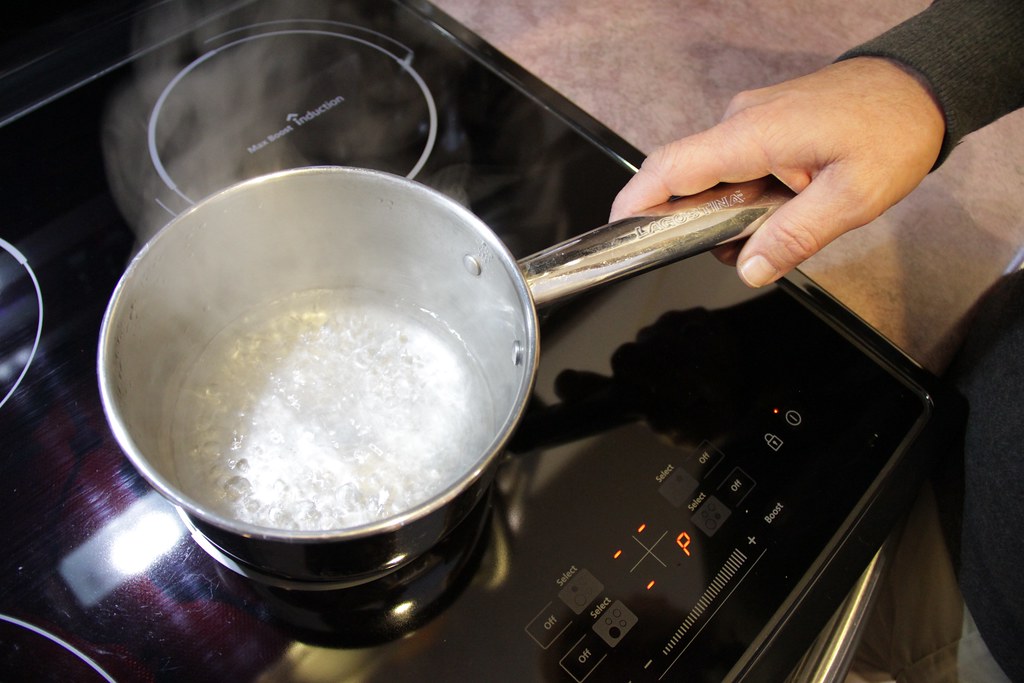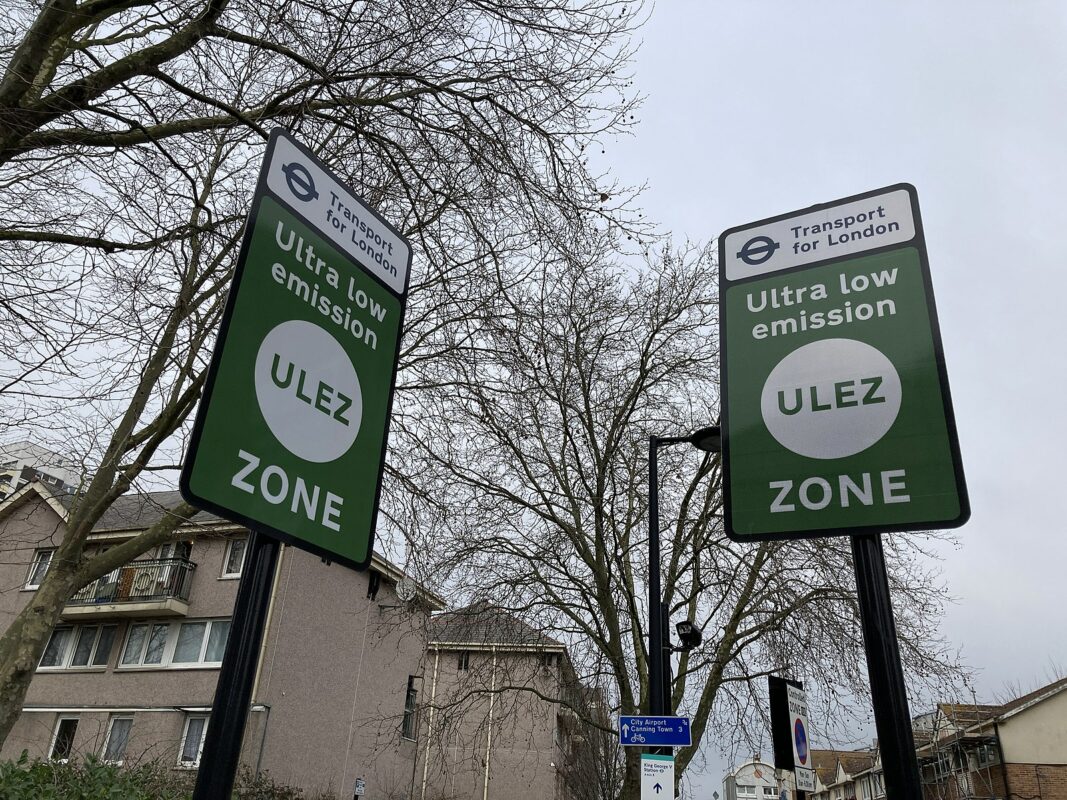
BACKGROUND
This year, New York City experienced an unprecedented air quality crisis due to forest fires hundreds of miles away. Residents were recommended to limit travel, stay home, and close their windows, highlighting the global nature of climate and air quality concerns. At the local level, poor air quality can be linked to existing freight networks that rely on heavy-duty diesel transport, buildings that depend on fossil fuel for heat and cooking, peaker plants, and unhealthy materials that line the interiors of our homes. Poor air not only contributes to higher rates of respiratory and cardiovascular diseases, but symptoms are triggered during times of elevated poor outdoor air quality, especially in historically underinvested neighborhoods like the South Bronx and Northern Manhattan. Respiratory health disparities not only pose health risks to families in these neighborhoods but also lead to a significant economic burden, as evidenced by the $660 million spent on hospitalizations in New York State in 2011.
VISION
The air quality crisis that blanketed New York City in June 2023 was a stark reminder of the critical need to address both indoor and outdoor air quality. It also highlighted a missed opportunity to activate existing assets to quickly communicate the exposures to the broader public, especially those most at risk. We envision an equitable framework that transforms the existing built environment to minimize health impacts on our most vulnerable New Yorkers. Improvements in air quality by just 10% could have significant impacts on millions of New Yorkers afflicted with respiratory diseases. Neighborhoods with the highest health disparities should be prioritized with investments in green infrastructure, decarbonized transportation options, and building retrofits. In addition to neighborhood improvements, deeper investments in educational campaigns and green jobs programs can bring attention to this growing health risk.
IDEAS
Expand air quality education through broader public engagement and workforce training.
Most New Yorkers are unaware of the health risks and long-term impacts of indoor and outdoor exposure to PM2.5 pollution. With a better understanding of air quality monitoring, residents, educators, and community groups could be empowered to drive behavioral changes during days with poor air quality or advocate for long-term neighborhood improvements.
Programs to increase engagement could include the following:
15.
The Mayor’s Office to Protect Tenants and Department of Health and Mental Hygiene (DOHMH) could create a “Know Your Air Rights” campaign. These types of programs could help residents understand the impacts of indoor air quality by focusing on behaviors like idling or masking during air quality alert days, and risks to other indoor risks like harmful paints, indoor heat, gas stoves, and mold.
16.
NYC Emergency Management and the Mayor’s Office of Climate and Environmental Justice could leverage technological assets, like digital screens in MTA stations, LinkNYC kiosks, and on subways to communicate live information during major health risk events, such as poor air quality or extreme heat.
17.
Invest in citizen science programs like Loisaida’s ECOLIBRIUM program that enhance environmental and climate science literacy while also supporting neighborhood air quality monitoring.
18.
Shape a denser sensor network to bring attention to environmental justice issues with partnerships that install sensors in the right of way near charging sources, such as LinkNYC kiosks, bus shelters, lamp posts, or charging stations. The City could invest in a community design competition that invites collaborations with artists to help shape visual tools that better communicate live data when health exposures are high.
19.
Invest in at-home air quality test kits for low-income New Yorkers, so that healthcare providers could write out prescriptions for short-term solutions like air purification to long-term solutions like air filtration and HVAC system upgrades.
20.
Build robust green workforce training programs through partnerships that support apprenticeships like community electricians, HVAC technicians, electric vehicle charging stations installers, and tree maintenance service workers. As examples, look to Community Health Action of Staten Island’s Arise Training Institute or BlocPower’s Civilian Climate Corps.
Explore policies that enforce better indoor air quality standards.
According to the EPA, Americans spend approximately 90 percent of their time indoors. During the pandemic and recent outdoor air quality events, housing played a critical role in protecting New Yorkers. But some pollutants can be trapped or concentrated inside.
Measures to improve indoor health could include:
21.
Form an indoor health task force to explore policies that set minimum indoor air quality and ventilation standards in privately owned buildings, bolstering New York State’s Warranty of Habitability Law (§ 235-b) or other building codes. Policies should also explore tenant protections to ensure that all building improvements meet new standards to mitigate risk of displacement.
22.
Set high standards by the Department of Buildings that require indoor air quality improvements prior to weatherization or envelope upgrades so that conversions do not exacerbate indoor exposures.
23.
Support healthier indoor environments in public schools by implementing more rigorous testing for harmful building materials, installing indoor air sensors, and bolstering long-term maintenance of air purification systems.
24.
Expand New York City’s Local Law 84 to include monitoring and benchmarking of indoor air quality in buildings of a specific size. Increased reporting of data could support broader policy reform.
Case Study:
Loisaida’s ECOLIBRIUM Program
ECOLIBRIUM assembled a group of students and working professionals in the fields of data science, architecture, and engineering to improve public health and monitor environmental conditions on the Lower East Side. Their first phase seeks to raise public awareness on environmental health hazards through multimedia platforms, including a comprehensive hazard map and an interactive exhibition.
Drive deeper investments into building retrofits in all building types, especially small, mid-sized, and historic buildings.
Ending our reliance on fossil fuels also improves indoor air quality. Given the impacts of gas appliances on indoor health, our timeline for a green transition must be shortened. The City must double down on driving new building retrofits to install electric heat pumps and electric induction stoves in every building citywide.
Strategies to help drive conversions could include:
25.
Create buy-back programs for old appliances, similar to programs like PSEG Long Island | Appliance Recycling Program.
26.
Invest in a new round of NYSERDA’s Clean Heat Challenge in NYCHA buildings with the highest asthma rates.
27.
Invest in pilot programs for public housing and affordable housing, like WE ACT’s Out of Gas program, that monitor indoor air quality before and after induction stove installations.
28.
Leverage New York City talent, like start-ups at the Newlab, to explore low-cost green energy retrofits for low-income households, supported by an expanded NYC Accelerator program.
29.
Improve education for small landlords and building supers on harmful cleaning materials and building materials that emit volatile organic compounds (VOCs) or other chemicals that contaminate indoor air.
30.
Develop a Community Green Navigators Network that could empower community-based organizations to support small businesses, small homeowners, low income or rent stabilized housing providers navigating the energy retrofit market. Improved community-based outreach could reduce barriers for information to better navigate City and State grant programs for decarbonization.
31.
Convene a Healthy Buildings Task Force at the Department of Buildings, NYC Economic Development Corporation, and the Department of Health to explore incentives for using healthy building materials in new housing construction and building retrofits. Look to Harvard’s 9 Foundations of a Healthy Building that focuses on the impacts of building design on physical and mental health.
Case Study:
WE ACT’s Out of Gas, In With Justice Pilot Program

Image Credit: Green Energy Futures
The Out of Gas, In with Justice Pilot compared air quality improvements between ten apartments with new induction stoves and ten with their existing gas stoves. Significant improvements were seen in apartments with new induction stoves. Gas stoves emit nitrogen oxides which not only drive climate change but also exacerbate respiratory illnesses and increase risks for developing asthma.
Prioritize the design of more people-oriented streets to incentivize alternative forms of mobility.
Although access and affordability to electric cars will improve in the coming years, New York City must support safer, sustainable forms of transport that rely less heavily on fossil fuels, while also ensuring healthier and more active travel.
Strategies could include:
32.
Use automated enforcement in areas with reduced car traffic like dedicated bus lanes, bike lanes, loading zones, congestion pricing zones, and neighborhood slow zones.
33.
Charge for all on-street parking for non-residents and limit the quantity of spaces available. Parking fees could be used to fund projects that can improve air quality or have other health benefits, such as maintenance of street trees, Fair Fares subsidies, or Citi Bike memberships for low-income residents.
34.
Drive new street tree planting during routine sidewalk or street upgrades through better coordination led by the new Chief Public Realm Officer between the Department of Transportation (DOT), Department of Environmental Protection (DEP), Department of Design and Construction (DDC) and Department of Parks (DPR).
Accelerate a clean, green industrial sector citywide.
Industrial and manufacturing jobs support low-barrier work, especially in a growing green manufacturing sector. Yet historically, industrial zones have produced poor air quality, stormwater runoff, and congestion from dirty diesel trucks. Small freight delivery vehicles contribute to the greatest TRAP (traffic-related air pollution). To date, outer boroughs have seen the lowest investments in charging infrastructure for electric vehicles.
Built environment investments and regulations to equitably accelerate this transition could include:
35.
Study siting and feasibility of charging infrastructure for electric refrigerated trucks near food hubs, such as supermarkets, loading zones in commercial corridors, plazas activated by farmers markets, and future microdistribution hubs. Electric Transport Refrigeration Units (eTRUs) could dramatically cut emissions and noise on the street, especially in areas with high asthma rates.
36.
Prioritize the creation of additional micro-distribution centers, where goods can be consolidated into bicycle trailers, in environmental justice communities. This would reduce last-mile truck delivery and related emissions, building on the City’s Streets Plan and “New” New York Panel recommendations.
37.
Accelerate the creation of low emission zones, similar to London’s ULEZ initiative, which encourages the most polluting heavy diesel vehicles to become cleaner.
38.
Support a green and clean industrial sector through business accelerators, incentives and grants for energy retrofits, and expansion and maintenance of green infrastructure surrounding industrial business zones through nonprofit or business partners.
39.
Work with New York City Fire Department (FDNY) to set standards for delivery e-bike charging rooms built with fire rated construction in buildings like NYCHA, to incentivize modes for sustainable transportation.
Case Study:
London’s ULEZ Initiative

Image Credit: Matt Brown
First introduced in 2019, The Ultra Low Emission Zone program deals out fines for the use of diesel powered vehicles in most parts of Greater London. Starting in 2023, the zone will expand across all of London’s boroughs. The program has been successful in decreasing harmful pollution emissions by 26% within these zones as well as reducing overall traffic flows within the zones.
Next: Safe Experiences →
Many thanks to the Fresh Air Working Group members, who collaborated on the creation of these ideas and recommendations: Talor Crawford, Tanya Gomez, Inbar Kishoni, Yasmin Meah, Kovid Saxena, Sabah Usmani and Nathan King.